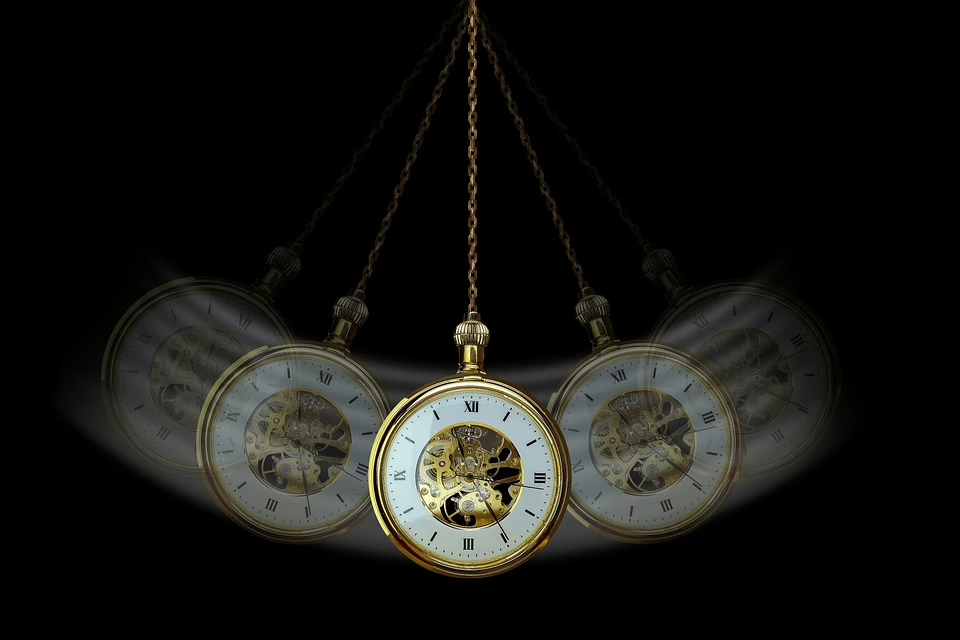Unraveling Attraction: An In-Depth Look at Desire
Attraction, that potent and often perplexing force, lies at the heart of human connection. It fuels friendships, sparks romantic relationships, and drives societal structures in ways we often fail to fully comprehend. It’s a complex interplay of biological imperatives, learned preferences, and deeply personal experiences, a confluence of factors that can both exhilarate and confound us. This article delves into the intricate mechanisms underlying attraction, exploring its various facets, challenging conventional wisdom, and seeking to unravel the mysteries behind our desires.
I. The Foundations: Biological and Evolutionary Underpinnings
At its most fundamental level, attraction is rooted in our biological and evolutionary heritage. [mfn 1] Our bodies, finely tuned over millennia, are programmed to seek out partners who can contribute to the survival and propagation of our genes. This doesn’t necessarily imply a conscious decision-making process, but rather a set of ingrained preferences and unconscious cues that influence our attraction.
-
Genetic Fitness and Mate Selection: Evolutionary psychology posits that we are attracted to individuals who display markers of good health and genetic fitness. [mfn 2] These markers, often communicated through physical characteristics, can signal an individual’s ability to reproduce successfully and pass on desirable traits to offspring. Symmetry, for example, is often considered attractive, as it may indicate developmental stability and resistance to disease. A clear complexion, lustrous hair, and a healthy build can also signal good health and vitality.
-
Hormonal Influences: Hormones play a critical role in driving attraction and sexual desire. [mfn 3] Testosterone, in both men and women, is associated with libido and assertiveness. Estrogen, predominantly in women, is linked to fertility and feminine characteristics. Pheromones, chemical signals secreted by the body, are thought to play a role in attracting potential mates, although their exact mechanism and impact on human behavior are still debated. [mfn 4]
-
The Major Histocompatibility Complex (MHC): Research suggests that we are often subconsciously attracted to individuals with dissimilar MHC genes, which play a crucial role in the immune system. [mfn 5] This preference for genetic diversity may be an evolutionary mechanism to ensure that offspring inherit a wider range of immune responses, making them more resistant to disease. Studies have shown that individuals can subconsciously differentiate scents based on MHC genes, leading to attraction or repulsion.
-
Reproductive Strategies: Evolutionary psychologists propose that men and women have evolved different reproductive strategies, which influence their attraction preferences. Men, traditionally investing less in offspring, may prioritize signs of fertility and youthfulness in potential partners. Women, bearing the greater burden of reproduction, may be more drawn to partners who exhibit signs of resources, stability, and the ability to provide for offspring. [mfn 6] However, these are broad generalizations and individual preferences vary widely.
II. Beyond Biology: Psychological and Social Influences
While biology provides a foundational framework for attraction, psychological and social factors play an equally important role in shaping our desires. Our personal experiences, cultural norms, and learned preferences contribute to the complex tapestry of attraction.
-
Proximity and Familiarity: The mere exposure effect suggests that we tend to develop a preference for things or people we are frequently exposed to. [mfn 7] Proximity, the physical closeness to someone, increases the likelihood of interaction and familiarity, which can lead to attraction. This explains why we often form relationships with people we encounter regularly, such as classmates, coworkers, or neighbors.
-
Similarity and Homogamy: “Birds of a feather flock together” is a saying that reflects the principle of homogamy, the tendency to form relationships with people who are similar to us in terms of demographics, values, interests, and personality. [mfn 8] Similarity provides a sense of validation, reduces conflict, and makes communication easier. Shared experiences and common ground can foster a sense of connection and intimacy.
-
Reciprocity of Liking: We tend to like people who like us. [mfn 9] Knowing that someone is attracted to us can be a powerful motivator for reciprocation. Reciprocity of liking boosts our self-esteem and creates a sense of social validation, making us more likely to develop feelings for that person.
-
Personality Traits: Certain personality traits are consistently associated with attractiveness. Kindness, warmth, intelligence, humor, and confidence are often considered desirable qualities in a partner. [mfn 10] These traits can signal emotional stability, empathy, and the ability to form meaningful connections.
-
Social Learning and Cultural Norms: Our understanding of attractiveness is heavily influenced by social learning and cultural norms. Media portrayals, societal expectations, and family values shape our perceptions of what is considered desirable. [mfn 11] Cultural beauty standards, for example, can vary dramatically across different societies and historical periods.
-
Attachment Styles: Our early childhood experiences with caregivers can influence our attachment styles, which in turn affect our relationship patterns and attraction preferences. [mfn 12] Individuals with secure attachment styles tend to be more confident, trusting, and able to form healthy relationships. Those with anxious or avoidant attachment styles may exhibit different patterns of attraction, such as being drawn to emotionally unavailable partners or experiencing fear of intimacy.
III. The Subjective Nature of Beauty and Attraction
While there are general trends and universal preferences, it’s crucial to acknowledge the highly subjective nature of beauty and attraction. What one person finds attractive, another may find unappealing. Personal experiences, individual preferences, and unique perspectives all contribute to the diverse spectrum of attraction.
-
The Role of Personal History: Our past relationships and experiences can significantly shape our future attraction preferences. A positive experience with someone who possesses certain qualities may lead us to seek out similar traits in future partners. Conversely, a negative experience may create an aversion to certain characteristics.
-
The Power of Personality: Beyond physical appearance, personality can be a powerful driver of attraction. Someone who initially might not be considered conventionally attractive can become increasingly appealing as we get to know their personality and appreciate their inner qualities.
-
The Importance of Connection: A deep sense of emotional connection, shared values, and mutual understanding can transcend physical attraction. Authenticity, vulnerability, and the ability to create a safe and supportive space are essential ingredients for lasting intimacy.
-
Challenging Beauty Standards: The prevailing beauty standards often perpetuate unrealistic and unattainable ideals. It’s important to critically examine these standards and cultivate a more inclusive and accepting view of beauty. Attraction is not limited to a narrow definition of physical perfection but encompasses a wide range of qualities and characteristics that make each individual unique and beautiful in their own way.
IV. The Dark Side of Attraction: Obsession and Unhealthy Patterns
While attraction can be a source of joy and fulfillment, it can also have a darker side. Obsessive attraction, unhealthy relationship patterns, and the pursuit of unattainable ideals can lead to distress and suffering.
-
Obsessive Attraction and Stalking: In extreme cases, attraction can escalate into obsession, leading to stalking behavior and other forms of harassment. [mfn 13] Obsessive attraction often stems from underlying psychological issues, such as low self-esteem, anxiety, or a distorted sense of reality.
-
Unhealthy Relationship Patterns: Individuals with insecure attachment styles or unresolved emotional issues may be prone to forming unhealthy relationship patterns. They may be drawn to emotionally unavailable partners, engage in codependent relationships, or experience cycles of idealization and devaluation.
-
The Pursuit of Unattainable Ideals: The constant exposure to idealized images in media can lead to unrealistic expectations and a relentless pursuit of unattainable ideals. This can result in body image issues, low self-esteem, and a sense of perpetual dissatisfaction.
-
Recognizing Red Flags: It’s important to be aware of red flags in relationships and to prioritize one’s own safety and well-being. Signs of controlling behavior, emotional abuse, or a lack of respect should not be ignored.
V. Cultivating Healthy Attraction and Relationships
Cultivating healthy attraction and building fulfilling relationships requires self-awareness, emotional intelligence, and a commitment to personal growth.
-
Self-Awareness and Self-Love: Understanding your own values, needs, and attachment style is crucial for forming healthy relationships. Developing self-love and acceptance is essential for attracting partners who will appreciate you for who you are.
-
Emotional Intelligence: Emotional intelligence, the ability to understand and manage your own emotions and the emotions of others, is a key ingredient for successful relationships. Empathy, communication skills, and conflict resolution skills are all essential for navigating the complexities of intimacy.
-
Authenticity and Vulnerability: Being authentic and vulnerable allows you to connect with others on a deeper level. Sharing your true self, with all its imperfections, creates a space for genuine connection and intimacy.
-
Communication and Boundaries: Open and honest communication is essential for building trust and resolving conflict. Establishing healthy boundaries is crucial for maintaining your own well-being and preventing codependency.
-
Challenging Negative Beliefs: Identify and challenge any negative beliefs or patterns that may be hindering your ability to form healthy relationships. Therapy, self-help resources, and support groups can be valuable tools for personal growth and healing.
VI. The Future of Attraction: Technology and Evolving Dynamics
Technology is increasingly shaping the landscape of attraction and relationships. Online dating platforms, social media, and artificial intelligence are transforming the way we meet, interact, and form connections.
-
Online Dating and the Algorithm: Online dating platforms use algorithms to match individuals based on their profiles, preferences, and behaviors. While these algorithms can be helpful in connecting people with potential partners, they can also perpetuate biases and create a sense of superficiality.
-
Social Media and the curated self: Social media allows us to present a curated version of ourselves to the world. While this can be empowering, it can also lead to unrealistic expectations and a focus on superficial appearances.
-
AI and Relationships: Artificial intelligence is increasingly being used to create virtual companions and relationship coaches. While AI can provide support and companionship, it’s important to consider the ethical implications of relying on technology for emotional fulfillment.
-
The Evolution of Relationships: The definition of relationships is constantly evolving. Traditional models of marriage and monogamy are being challenged by alternative relationship structures, such as polyamory and open relationships.
VII. Conclusion: Embracing the Complexity of Desire
Attraction is a multifaceted and ever-evolving phenomenon. It is a complex interplay of biological imperatives, psychological influences, social norms, and personal experiences. Understanding the various factors that contribute to attraction can help us navigate the complexities of human connection and build more fulfilling relationships. It is important to embrace the subjective nature of beauty and attraction, to challenge unrealistic ideals, and to cultivate self-awareness, emotional intelligence, and a commitment to personal growth. By acknowledging the darker side of attraction and prioritizing our own well-being, we can harness the power of desire to create meaningful and lasting connections. The journey of understanding attraction is a lifelong exploration, a continuous process of learning, growing, and evolving in our understanding of ourselves and others. Ultimately, unraveling the mysteries of attraction allows us to appreciate the beauty and complexity of the human heart and to forge connections that enrich our lives in profound ways.
[mfn 1] Miller, G. F. (2000). The mating mind: How sexual choice shaped the evolution of human nature. Doubleday.
[mfn 2] Thornhill, R., & Gangestad, S. W. (1999). Facial attractiveness. Trends in Cognitive Sciences, 3(12), 452-460.
[mfn 3] Bancroft, J. (2002). The endocrinology of sexual arousal. The Lancet, 360(9331), 405-416.
[mfn 4] Doty, R. L. (2010). The great pheromone myth. Johns Hopkins University Press.
[mfn 5] Wedekind, C., Seebeck, T., Bettens, F., & Paepke, A. J. (1995). MHC-dependent mate preferences in humans. Proceedings of the Royal Society of London. Series B: Biological Sciences, 260(1359), 245-249.
[mfn 6] Buss, D. M. (1989). Sex differences in human mate preferences: Evolutionary hypotheses tested in 37 cultures. Behavioral and Brain Sciences, 12(1), 1-14.
[mfn 7] Zajonc, R. B. (1968). Attitudinal effects of mere exposure. Journal of Personality and Social Psychology, 9(2, Pt. 2), 1-27.
[mfn 8] Byrne, D. (1971). The attraction paradigm. Academic Press.
[mfn 9] Curtis, R. C., & Miller, K. (1986). Believing that another likes or dislikes you: Meta-analysis findings. Psychological Bulletin, 99(1), 91-110.
[mfn 10] Lippa, R. A. (2007). The preferred traits of mates: A meta-analysis. Journal of Personality, 75(1), 1-37.
[mfn 11] Anderson, K. J., & DiDomenico, S. I. (1992). Diet versus exercise in weight loss: Impact of media coverage on self-efficacy. Journal of Social and Clinical Psychology, 11(4), 469-479.
[mfn 12] Hazan, C., & Shaver, P. (1987). Romantic love conceptualized as an attachment process. Journal of Personality and Social Psychology, 52(3), 511-524.
[mfn 13] Cupach, W. R., & Spitzberg, B. H. (2004). The dark side of relationship pursuit: From attraction to obsession and stalking. Lawrence Erlbaum Associates Publishers.


























Add Comment